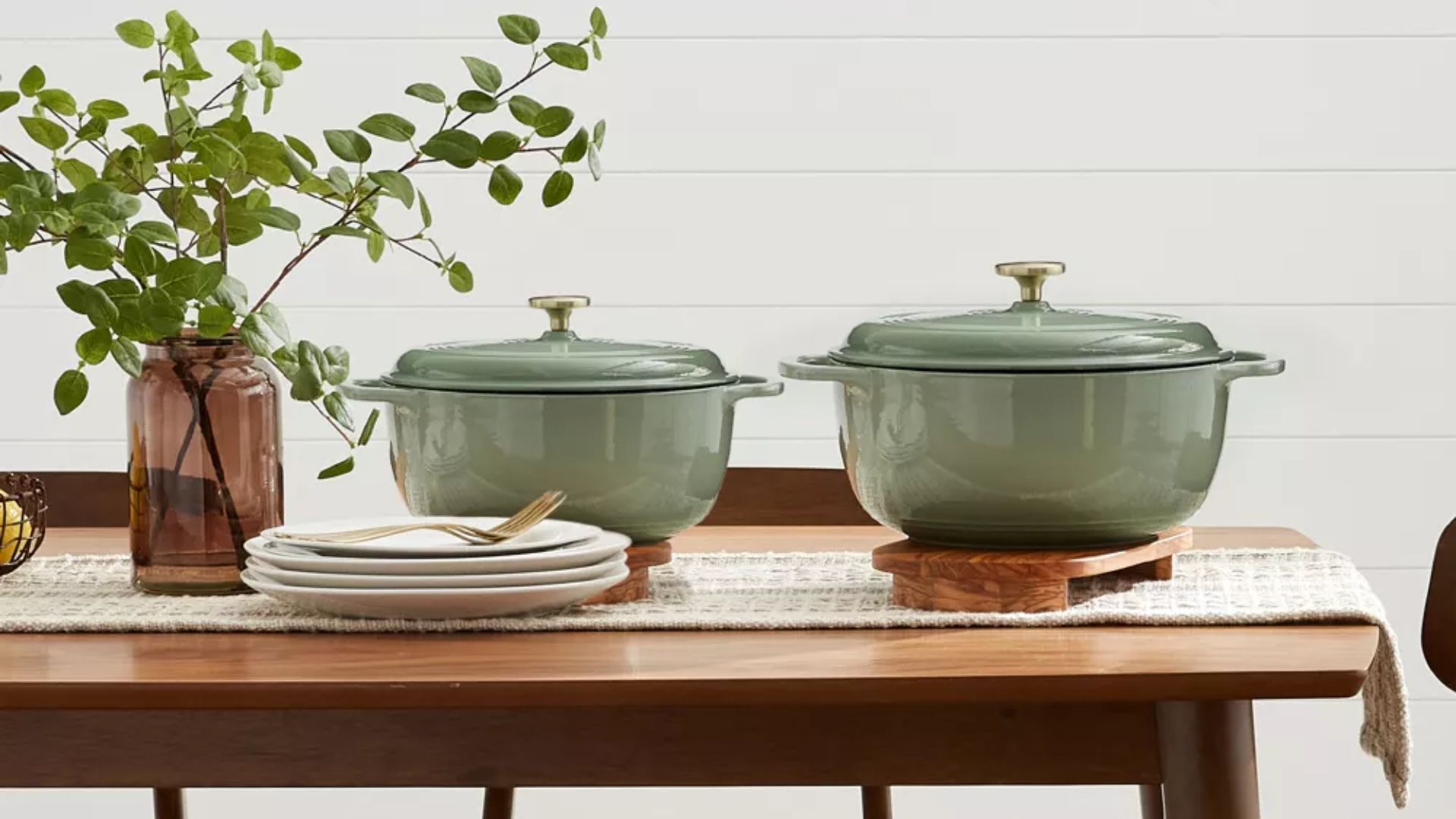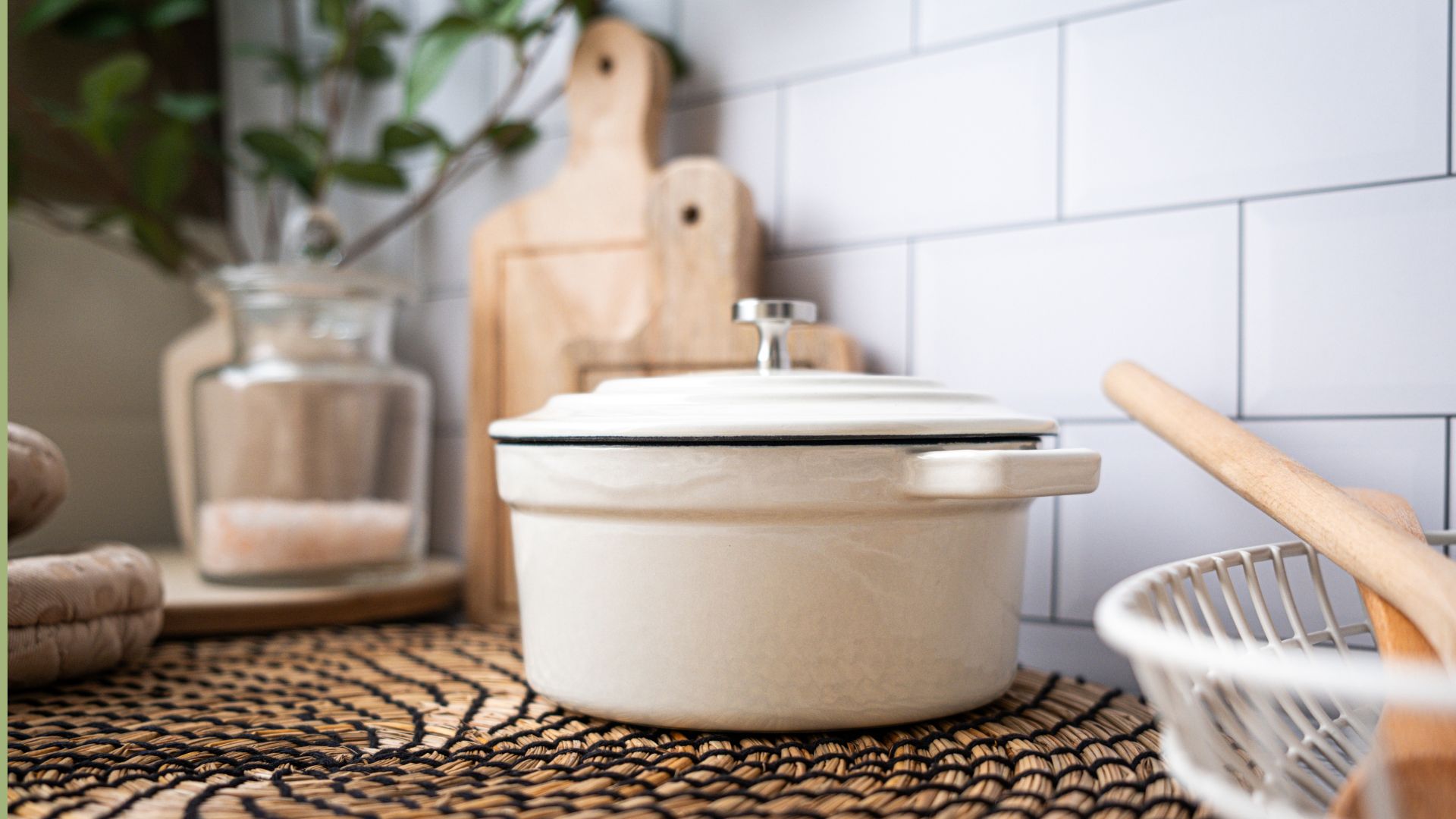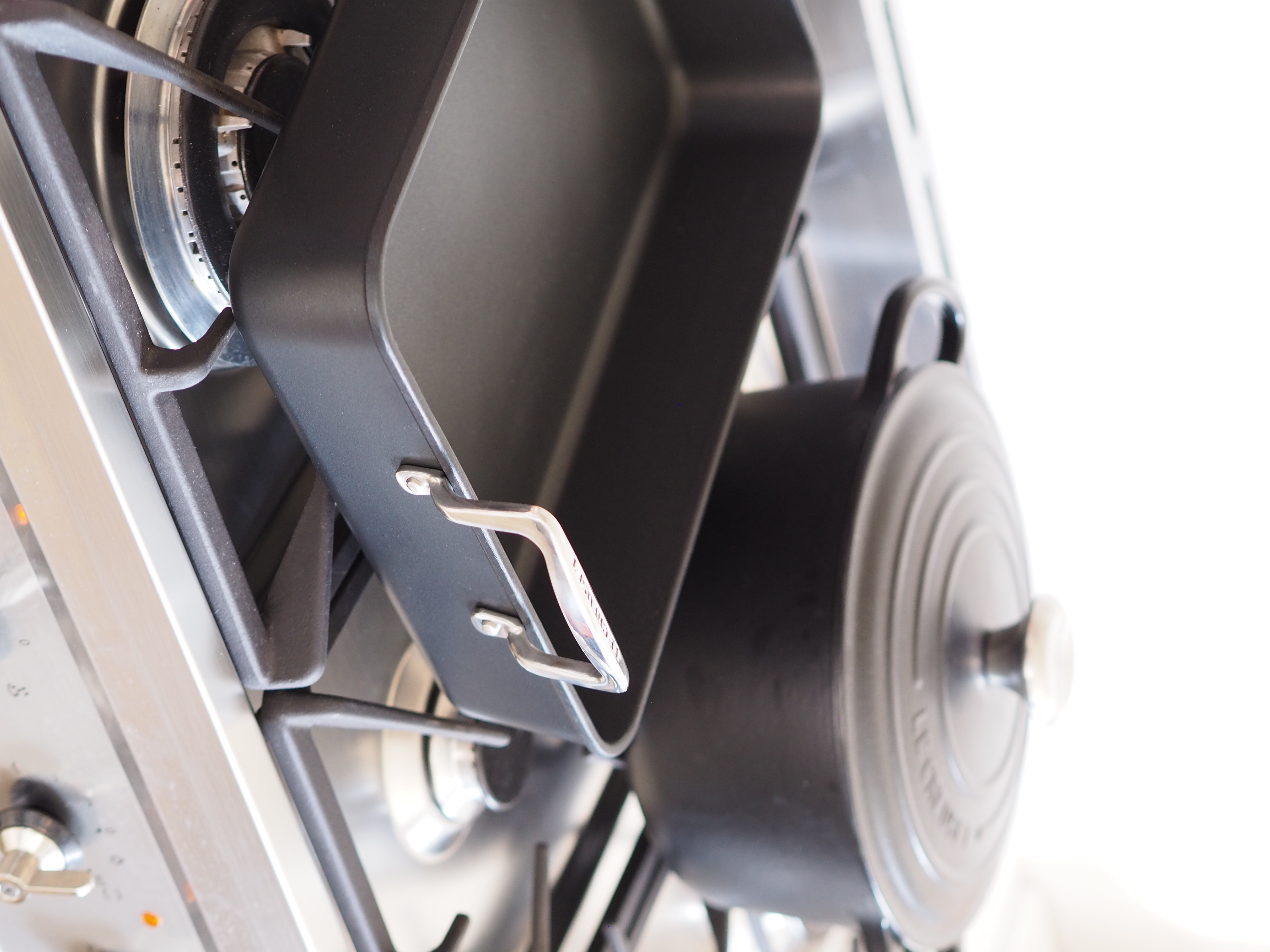How to Clean a Dutch Oven — It's Easier Than You Think and Can Be Done in 5 Simple Steps
A professional guide to cleaning your beloved cookware


Dutch ovens are a popular piece of cookware in many households for good reason. Their versatility is broad, being perfect for creating all kinds of cuisines, from simmering stews to bouncy, fluffy loaves of bread, and they maintain heat incredibly well, keeping your dinner warmer for longer.
Cleaning a Dutch oven correctly is an important part of its maintenance, as well as an essential household cleaning chore that should be tackled as soon as possible. Though if you clean it using the wrong tools and products, you can cause irreparable damage and alter the taste of your food.
After talking to a cleaning expert, I gathered information for a step by step guide on how to properly clean your Dutch oven with minimal impact on its future performance. Let's get into it.
What You'll Need
"A Dutch oven is an essential tool in any kitchen, known for its versatility and durability. However, to keep it performing at its best, proper cleaning is crucial," says Muffetta Krueger, owner of Muffetta's Housekeeping. "Regular cleaning not only preserves the appearance of your Dutch oven but also prevents rust, staining, and lingering odors that can affect the flavor of your dishes. By maintaining your Dutch oven, you ensure consistent performance and extend its lifespan."
To clean your Dutch oven, Muffetta recommends gathering the following tools and products for the job:

- A microfiber cloth. The MR.SIGA microfiber cleaning cloths from Walmart come in a pack of 12.
- Baking soda. This is available in many stores inexpensively, such as the Good & Gather baking soda from Target.
- White vinegar. The Great Value distilled white vinegar 64 fl bottle from Walmart is their best-rated.
- Mild dish soap. The seventh generation clean with purpose free & clear liquid dish soap from Walmart is plant-derived, containing no dyes or fragrances.
- A non-abrasive sponge. You can find soft sponges like the scotch-brite zero scratch scrub sponges and natural non-scratch scrubber sponge 3 pack from Target.
- Gloves. Using disposable gloves like the Great Value disposable vinyl gloves, 100 count from Walmart will keep your hands safe from dirt, but it's optional.
- A rubber, wooden or silicone spatula. Using a silicone spatula like those in the faberware professional silicone solid spatula red set from Walmart can help to remove stubborn residue from your Dutch oven but won't scratch it like a metal tool could.
How to clean a Dutch oven

It's time to clean your Dutch oven and get it sparkling once more before your next dinner party. Here's a step-by-step guide from our expert:
Step 1: Let your Dutch oven cool down - Before beginning any cleaning, it's important to let your Dutch oven naturally cool down to room temperature. Speeding up the cooling process might be tempting by carefully placing your Dutch oven in the sink under a running cold tap. However, doing this can cause a Dutch oven to crack as the temperature change will be too sudden.
The Livingetc newsletters are your inside source for what’s shaping interiors now - and what’s next. Discover trend forecasts, smart style ideas, and curated shopping inspiration that brings design to life. Subscribe today and stay ahead of the curve.
Muffetta says, "Placing a hot oven in cold water can cause cracking, so it's vital to allow your Dutch oven to cool completely before cleaning."
Step 2: Do an initial light clean - Beginning with an initial clean of your Dutch oven is the best way to remove debris and stains that aren't extremely stuck on. This provides a great starting point for the rest of the cleaning process, as once this surface level grime is washed away you will be able to easily see the tougher parts that need tackling. "Use a small amount of mild dish soap and a non-abrasive sponge to clean the interior and exterior of your Dutch oven after rinsing it out well with warm water," says Muffetta. "Avoid harsh scrubbers that can scratch enamel."
If you scrape off the enamel of your Dutch oven it will be less hygienic, more prone to rusting, and unsafe to cook foods in. Don't forget to rinse the suds out of your Dutch oven really well after conducting your initial clean to remove all soap residue from the cookware.

Step 3: Dry your Dutch oven well - Many Dutch ovens are made from metal, but even if yours isn't, it will still require thorough drying after each time it's cleaned. If you don't dry your Dutch oven correctly not only will it become more prone to rusting, but it can also attract mold (especially if it's stored away damp with the lid placed back on). Neither of these are things you want as part of a low-maintenance kitchen.
"After rinsing your Dutch oven thoroughly to remove soap residue, dry it with a soft cloth to prevent water spots," says Muffetta. Using a soft microfiber cloth to dry your Dutch oven is a great choice to avoid accidental scratches.
Step 4: Go back to tackle stubborn stains - The initial clean of your Dutch oven wasn't designed to tackle everything and anything, but more to give you a good starting point to locate problem areas. Finding stuck-on food that won't seem to budge, discoloration from sauce stains, and bad smells in your Dutch oven can all be disheartening, but fortunately they are all easier to tackle than you may first believe.
Muffetta explained to us simple but effective things people with nice-smelling kitchens always do to tackle these three common cleaning stressors:
- Burnt food: Boil water with a few drops of dish soap in the Dutch oven. Let it cool, then gently scrub with a nylon brush. Coarse salt acts as a natural scrubber for stubborn residue without causing scratches as well.
- Stains: Create a paste using baking soda and water. Apply to the stained area, let sit for 15 minutes, and scrub gently.
- Odors: Fill the Dutch oven with water and add half a cup of white vinegar. Simmer for 5-10 minutes, then rinse and dry.
If small areas of rust have accumulated on or inside of your Dutch oven, Muffetta recommends using steel wool to remove them.
All you need to do is rub the steel wool onto the rust for it to flake away. After tackling your Dutch oven's problems areas, rinse it out again thoroughly dry it and put it away.
FAQs
How often should I clean my Dutch oven?
It's actually best to clean your Dutch oven after every use to prevent residue from building up and larger, difficult cleaning jobs in the future.
If your Dutch oven is made from solid cast iron, it may not need a thorough deep clean after each use depending on what was cooked in it. For instance, if you baked a loaf of bread, you won't need to scrub your Dutch oven thoroughly.
How do you get burnt residue off a Dutch oven?
Muffetta Krueger, owner of Muffetta's Housekeeping, shared a nifty trick with us to remove stubborn burnt on residue from your Dutch oven. All you'll need is some boiling water, dish soap and, optionally, baking soda.
"To remove burnt residue off of your Dutch oven, boil water with a few drops of dish soap directly in the Dutch oven. Then, allow it to cool and gently scrub the residue with a nylon brush or sponge (something not abrasive to avoid scratching your Dutch oven's coating)," says Muffetta. "For extra tough spots, make a baking soda paste, apply it and leave it for 15 minutes, then scrub the area clean gently."
Some people swear by cleaning their cookware as little as possible to avoid altering the natural "seasoning" that has built up in their pans, pots, and trays. However, especially in a smaller form of oven like a Dutch oven, if residue if left to build up on the inside its lifespan could be impacted, and old food crumbs could work their way into your meals.
If damp food residue from the likes of soups and stews is left to fester in your Dutch oven, it can lead to rust as it mixes poorly with the metal of the oven. To stay on the safe (and healthier!) side, it really is best to give your Dutch oven a small clean after every use, and a deeper clean if it cooked a meal containing meat or something like a pigmented curry that could stain.

Ciéra is a writer and regional laureate with particular passions for art, design, philosophy and poetry. As well as contributing to Livingetc, she's an Editorial Assistant for Design Anthology UK and a contributing writer for Homes & Gardens and Apartment Therapy. Previous commendations of hers include being Highly Commended by The Royal Society of Literature and receiving a prestigious MA Magazine Journalism scholarship to City, University of London.